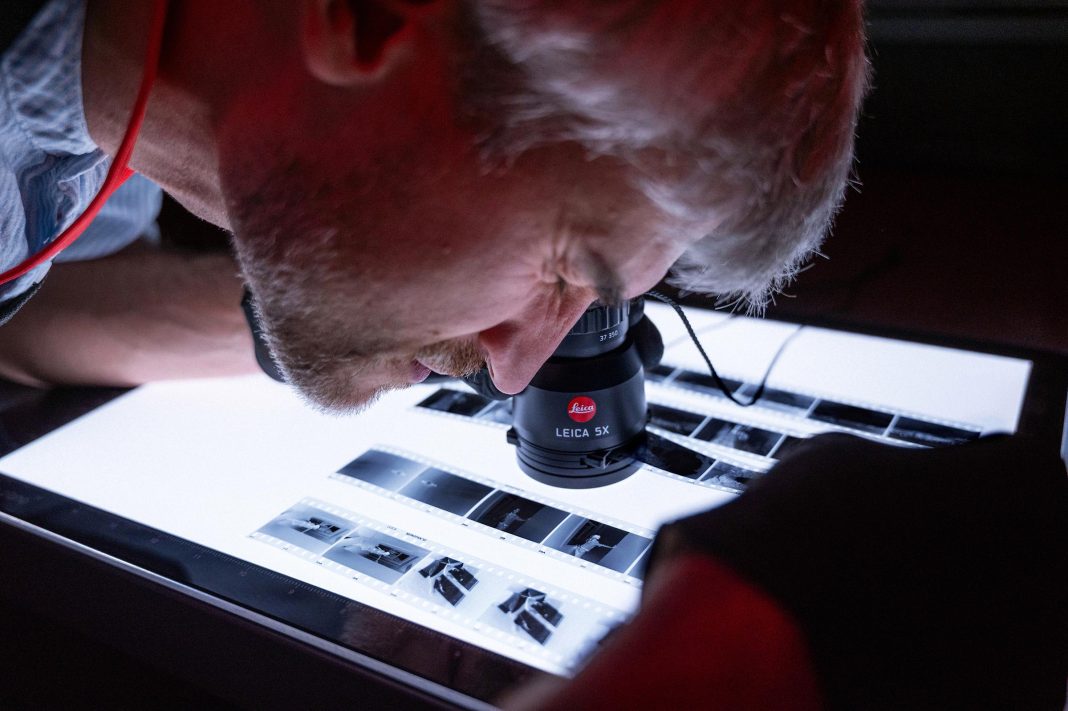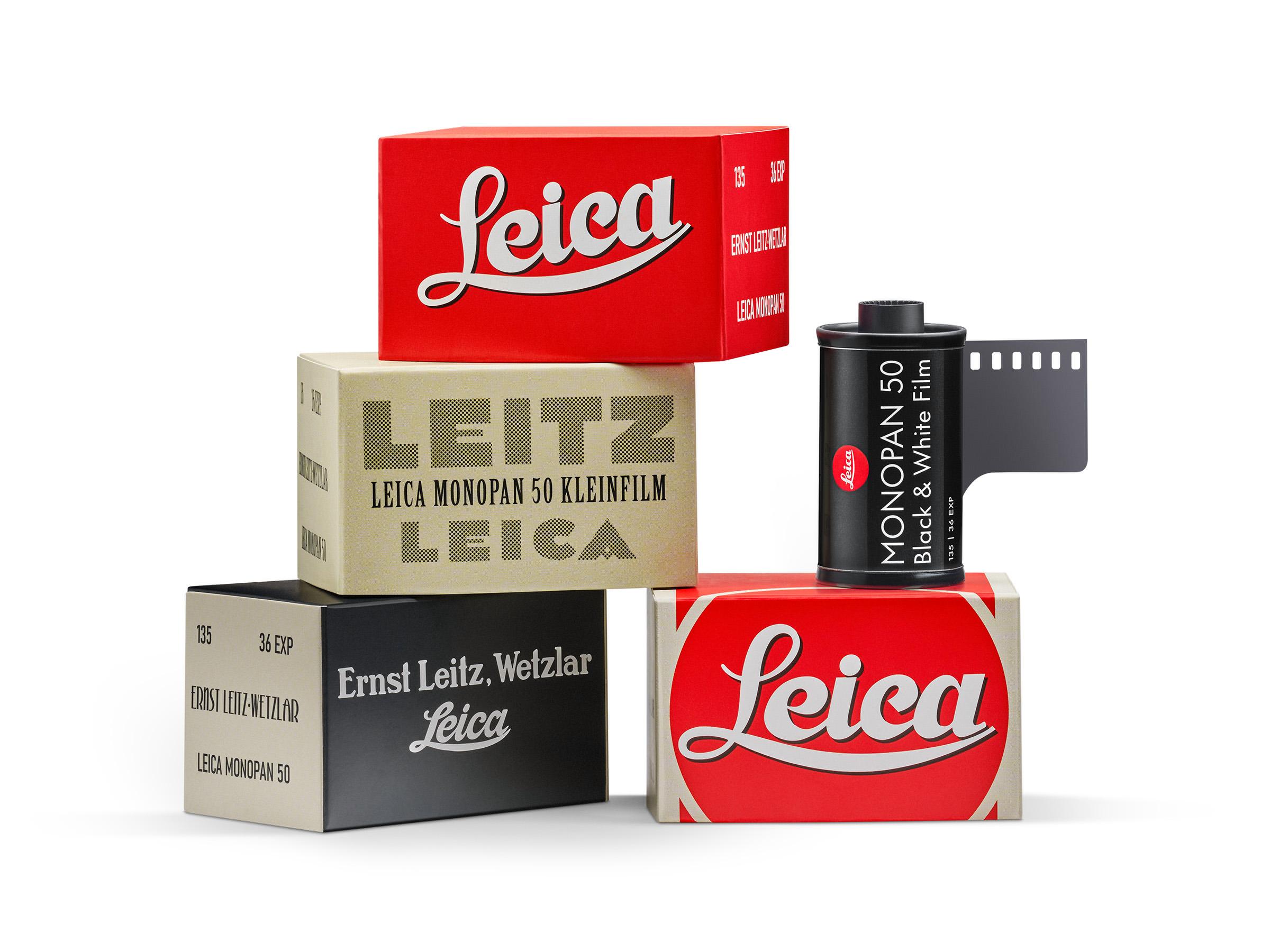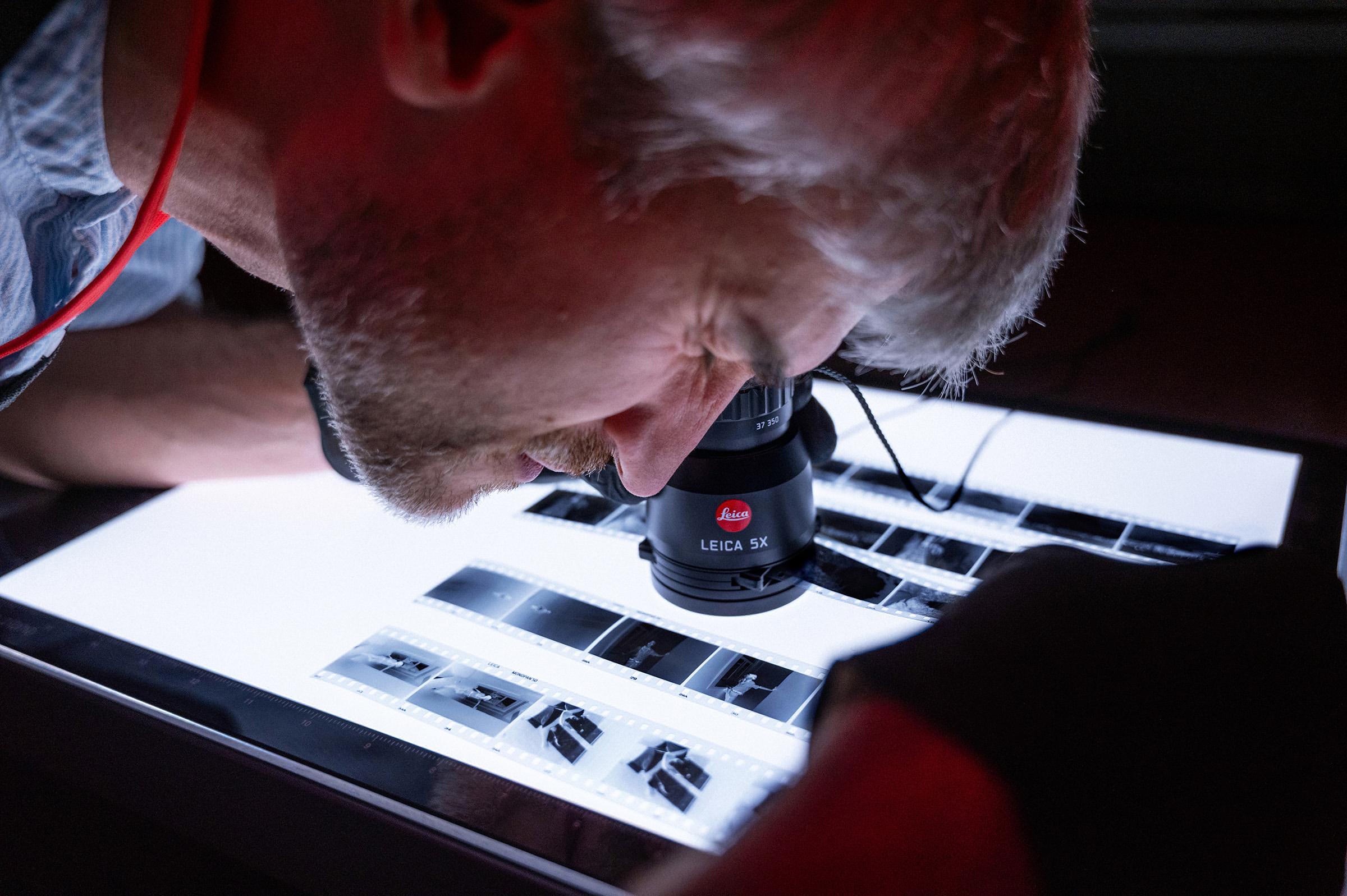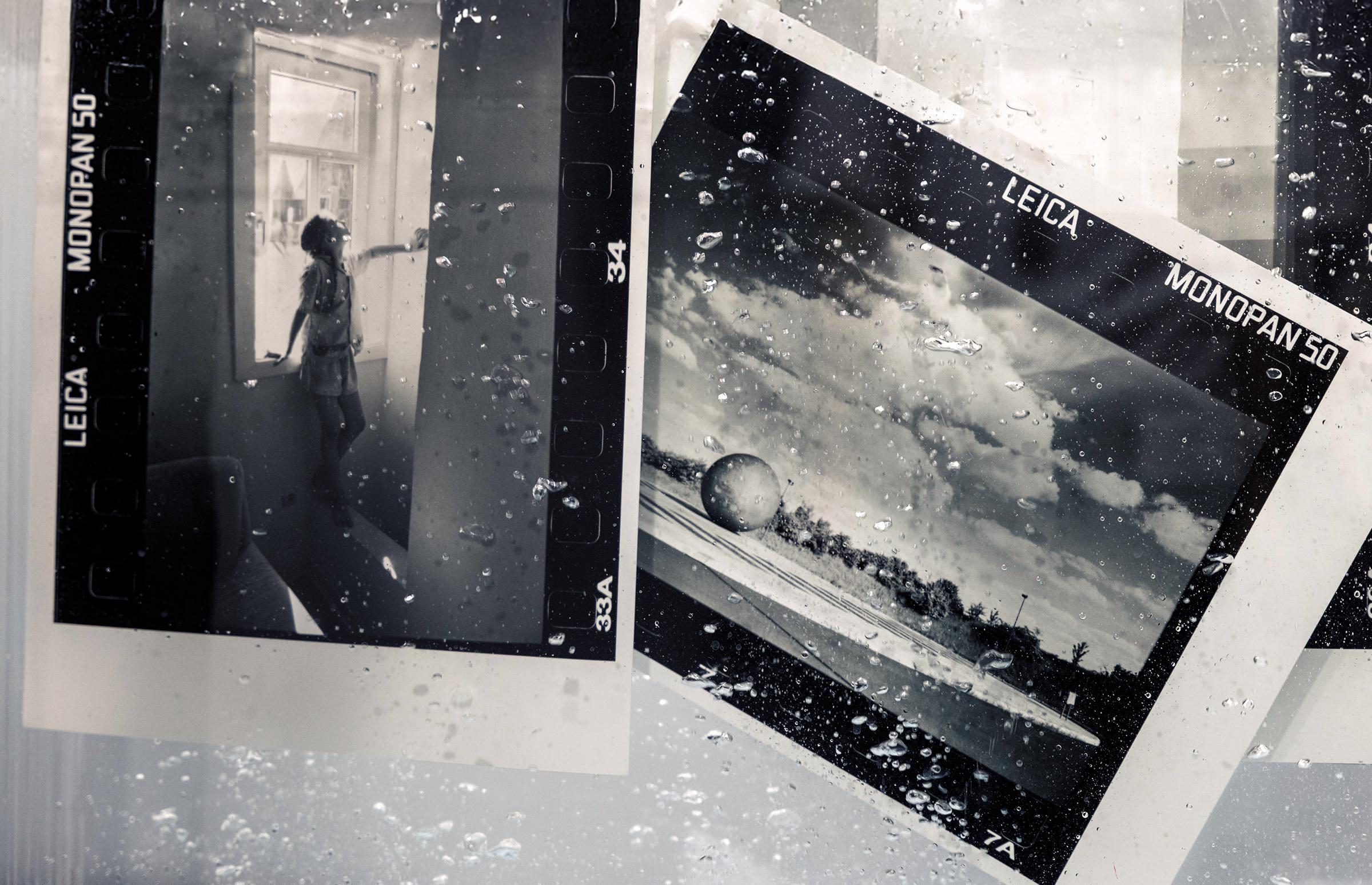In recognition of a century of 35mm photography, Leica is introducing Monopan 50, a high-resolution black-and-white film with enhanced spectral sensitivity. When the Leica camera made its debut in 1925, it rapidly established the 35mm format as a new industry standard for what was known in Germany as “kleinfilm” photography.
It swiftly gained traction with retailers and photographers, and 35mm film became known generically as “Leica film”. From the start, however, 35mm film was produced by third-party companies such as Kodak, Agfa or Perutz.
After a century, Leica now enters the film market. The name Monopan 50 is derived from its components. “Mono” refers to Leica’s Monochrom series cameras, first introduced in 2012, while “pan” denotes the film’s outstanding panchromatic properties. Finally, the 50 represents the ISO rating.
Sharpness and exceptional tonal range
Leica Monopan 50 features an ultra-fine grain, delivering a resolution of up to 280 line pairs per millimeter. With superchromatic sensitivity of up to 780 nanometers, it ensures remarkable sharpness and an exceptional tonal range. According to Leica, the film “encapsulates Oskar Barnack’s vision of ‘small negative — big picture’, the very principle that gave rise to the original Leica”.
With its refined specifications, the black-and-white film is tailored for Leica lenses, enhancing their optical performance, particularly in high-end, large-format prints and detailed scans.
In Barnack’s day, most films had low sensitivity, and Leica embraces this historical context in its choice of ISO 50 / 18 DIN. With high-performance lenses such as the Noctilux-M, Summilux-M and Summicron-M, the film’s low sensitivity enables wide-aperture shooting, rendering the distinctive Leica bokeh, even in bright conditions.
Monopan 50 for infra-red photography
Because of its enhanced spectral sensitivity, the new film is also ideal for infra-red photography and demonstrates exceptional responsiveness to filtration. As such, Monopan 50 pairs seamlessly with colour filters which enhance photographs with striking contrast and a dramatic aesthetic, granting photographers creative freedom in their compositions.
Produced in Germany, Monopan 50 is particularly suitable for landscape, architectural, cityscape and travel photography. The film is compatible with all black-and-white developers. Its vintage-style packaging evokes the pioneering era of 35mm photography.
Availability
Leica Monopan 50 will be available worldwide in Leica Stores and through authorised retainers from 21 August 2025. The recommended retail price is £10 | €12, including VAT.
Your reaction?
What do you think of Leica’s move into film? Will you be trying Monopan 50 and why? Please let us know in the comments section below.
More film news
Make a donation to help with our running costs
Did you know that Macfilos is run by five photography enthusiasts based in the UK, USA and Europe? We cover all the substantial costs of running the site, and we do not carry advertising because it spoils readers’ enjoyment. Every amount, however small, will be appreciated, and we will write to acknowledge your generosity.





In the last 5 years my digital to film shooting ratio has reversed so that now it’s 80% film and 20% digital. I just prefer film!
So…I’ll buy it, even if it’s just for the nice box. But also in the hope that it might convinced Leica to make something that is not just a rebranded film, something of their own here.
Another thought. If Leica is reluctant to take the gamble of a new scanner, they could at least consider to offer their own Scanning Service. If they claim that their new film delivers outstanding sharpness, they should give users the chance to enjoy it. The current scanners of labs (Noritsu and Fuji Frontier) have their limits. Silbersalz35 showed with the Apollon Scanner what can be squeezed out of negatives.
An interesting development. Rebadged Adox stock but significant to give Leica boutiques a branded film that fits the look. And the immense sharpness of Adox will certainly pair well with an APO… Even the 60MP digital shooters would be surprised. Shocked. A chance to start conversations and show the results in large print form. Grow the film revival, which surely Leica has a vested interest in. I’ll certainly grab a roll if passing, for novelty’s sake more than anything, 50 ISO being quite a rarity in my UK-centric film arsenal. But more important is if this a sign of things to come… a range of ISOs would be great, as would a little more energy on the film side of the range. Surely a bit of fun with the MPs and M6 at minimum to keep film in the headlines – a Safari MP, a silver M6? That would be fairly basic, but what is really needed is a basic entry-point to Leica film cameras, either a Minilux revival or a revival of the CL concept. And as noted here by a few… pretty please… a Leica scanner. I can only imagine the demand for a high quality 35mm scanner that employed Leica’s modern UI/UX, design and quality. I’d take one of those over an EVF M11 any day…
Maybe consider setting up a darkroom. Leica Focomat and V35 enlargers can be found as well as the few accessories needed- trays, safellight,tongs. Develop your craft and enjoy the old ways with different papers, toners etc. Film is a world of its own.
It looks interesting but with an ASA of 50 it’s too limited for me. ASA 200 or 400 is more practical for my needs. I’ve just finished a roll of XP2 at ASA 400.
XP2 was one of my favourite films.
It a pity indeed (you could also say: a shame) that there are so many amazing films but almost no decent scanners. And I wonder why no crowdfunding projects have been launched in this area so far (at least, I know of none). But stay tuned, we are planning an article on options how to digitalise negatives here on Macfilos. Spoiler alert: The results can be surprisingly good!
I will certainly give this a try in a modern MP and an M2
Pretty sure this is ADOX 50-HR rebadged for Leica. Specs look similar.
https://www.adox.de/Photo/hr50-en/
And the data sheet: https://www.fotoimpex.com/shop/images/products/media/63360_5_PDF-Datasheet.pdf
Interesting. Assuming you are right, what is the cost of a roll? Must be cheaper than £10/€12… I just took a quick look at the Adox site and some phraseology (“ideal for filtration”, “suitable for street and landscape photography”, “can be used as an infrared film”, “ultra-fine grain”) looks familiar, having just read Leica’s press release. And it’s made in Germany. Too much of a coincidence, I think. Well spotted.
The Adox 50 HR costs 6.99€ over here…
Their films are in general quite interesting and affordable. The Adox Scala is 6.99€ as well.
I wonder who manufactures this?
I am also disappointed in any new film scanners on the market. It seems I have to use a digital camera and macro lens. One would think there would be a market with increasing interest in film.
It looks like I’m the first to comment this article. As a matter of principle I support Leica’s commitment to film photography. I wish it were just a first step to a much stronger commitment. Something like a modern film scanner, fast and with resolving power up to the Leica brand name. I guess it is just wishful thinking…
Yes, I thought this would bring more comments. You can never tell what sparks enthusiasm. Although I have a collection of Leica film cameras, I haven’t had film for several years. But even I am tempted to buy a roll of this film just to see what I can make of it.